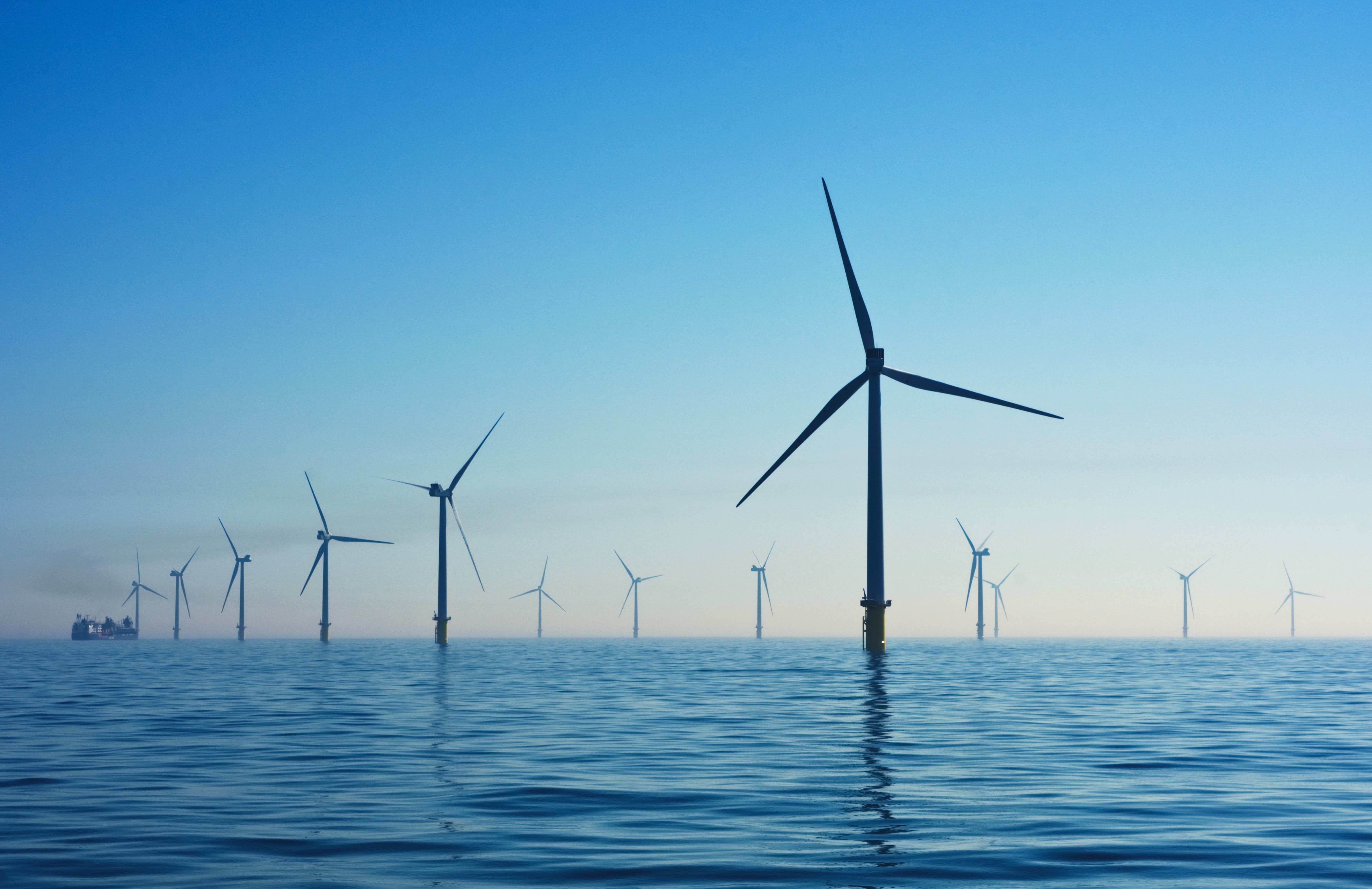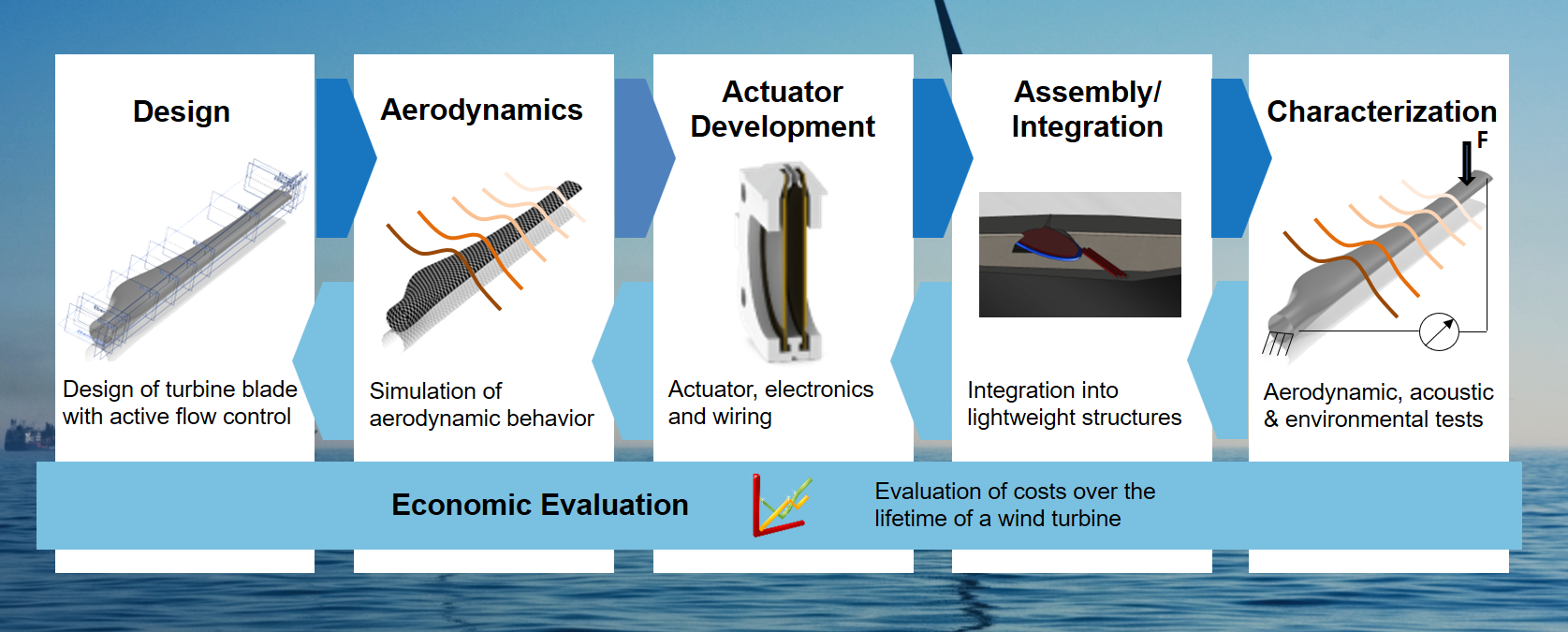TOpWind: Optimised wint harvesting capability by using active flow control
Both onshore and offshore, the size of wind turbines is constantly increasing, and along with it the rotor diameter. However, rotor diameters of over 120 m onshore and over 160 m offshore represent a major challenge aerodynamically and thus aeroacoustically. Due to wind shear in the atmosphere and turbulence, the blades of turbines are constantly exposed to changing conditions and loads. The previous method of balancing the loads by means of individual pitch control is no longer sufficient for such rotor diameters, even if the aim is to make the blades lighter.
Intelligent, local elements that can react quickly to changes in the flow represent a possibility for solving this problem and would also enable the use of lighter and longer blades. For this purpose, active flow control offers a very promising technology to improve the aerodynamic and aeroacoustic conditions on wind turbine blades.
In recent years, fluidic actuators (pulsed jet actuators, synthetic jet actuators, suction) have increasingly been included in R&D activities as possible actuator concepts. However, the application and investigation of these actuators has so far mainly taken place in the aerospace sector. However, there are fundamental studies that suggest that an application for wind turbines can have far-reaching effects on these systems. For example, increasing the rotor efficiency can improve the wind harvesting capacity and thus improve the possible energy yield.


